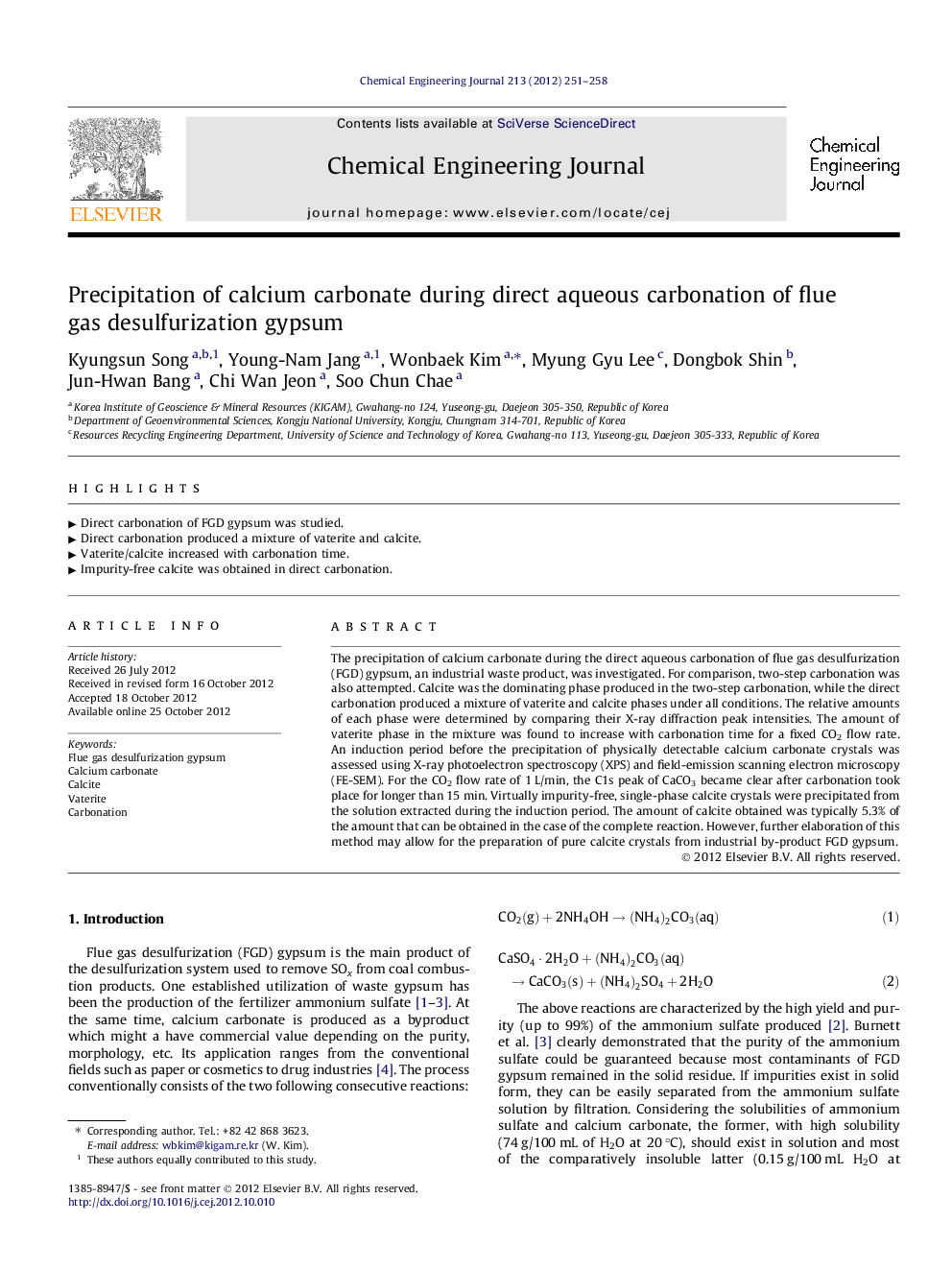| Article ID | Journal | Published Year | Pages | File Type |
|---|---|---|---|---|
| 149103 | Chemical Engineering Journal | 2012 | 8 Pages |
The precipitation of calcium carbonate during the direct aqueous carbonation of flue gas desulfurization (FGD) gypsum, an industrial waste product, was investigated. For comparison, two-step carbonation was also attempted. Calcite was the dominating phase produced in the two-step carbonation, while the direct carbonation produced a mixture of vaterite and calcite phases under all conditions. The relative amounts of each phase were determined by comparing their X-ray diffraction peak intensities. The amount of vaterite phase in the mixture was found to increase with carbonation time for a fixed CO2 flow rate. An induction period before the precipitation of physically detectable calcium carbonate crystals was assessed using X-ray photoelectron spectroscopy (XPS) and field-emission scanning electron microscopy (FE-SEM). For the CO2 flow rate of 1 L/min, the C1s peak of CaCO3 became clear after carbonation took place for longer than 15 min. Virtually impurity-free, single-phase calcite crystals were precipitated from the solution extracted during the induction period. The amount of calcite obtained was typically 5.3% of the amount that can be obtained in the case of the complete reaction. However, further elaboration of this method may allow for the preparation of pure calcite crystals from industrial by-product FGD gypsum.
► Direct carbonation of FGD gypsum was studied. ► Direct carbonation produced a mixture of vaterite and calcite. ► Vaterite/calcite increased with carbonation time. ► Impurity-free calcite was obtained in direct carbonation.
